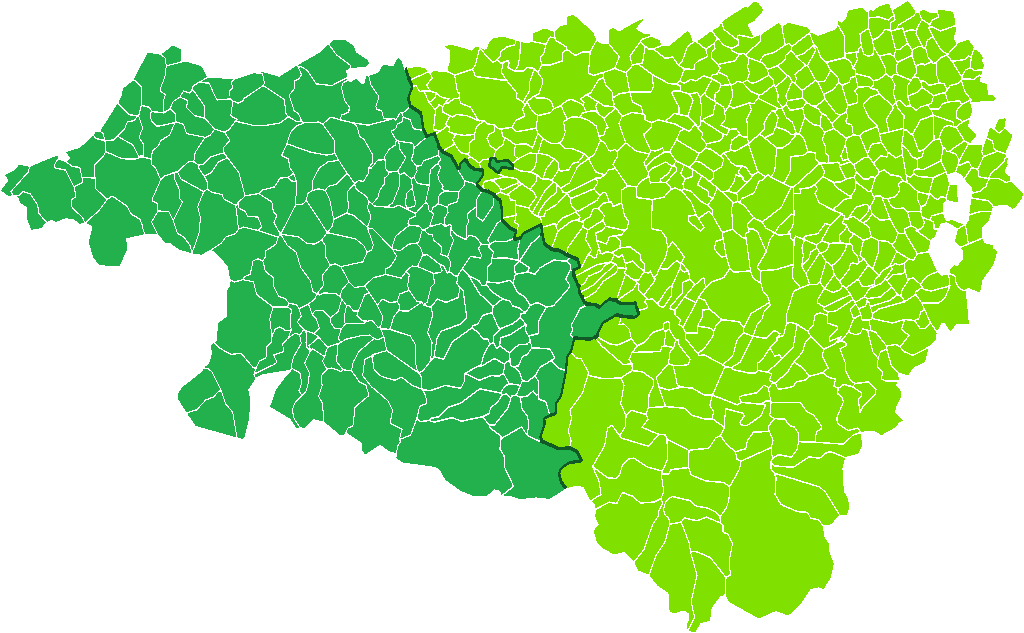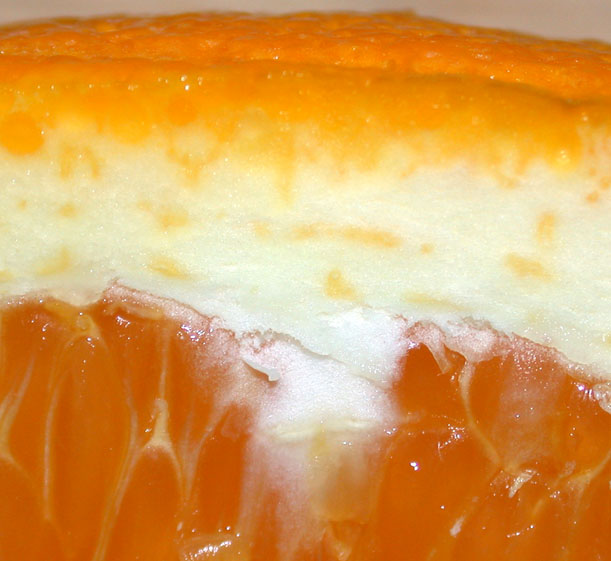|
Daube
Daube is a classic Provençal (or more broadly, French) stew made with inexpensive beef braised in wine, vegetables, garlic, and '' herbes de Provence'', and traditionally cooked in a daubière, a braising pan. A traditional daubière is a terracotta pot that resembles a pitcher, with a concave lid. Water is poured on the lid, which condenses the moisture inside, allowing for the long cooking required to tenderize lesser cuts of meat. The meat used in daube is cut from the shoulder and back of the bull, though some suggest they should be made from three cuts of meat: the " gelatinous shin for body, short ribs for flavor, and chuck for firmness." Although most modern recipes call for red wine, a minority call for white, as do the earliest recorded daube recipes. Daube is adapted in New Orleans cuisine to make daube glacé. Variations also call for olives, prunes, and flavoring with duck fat, vinegar, brandy, lavender, nutmeg, cinnamon, cloves, juniper berries, or orange ... [...More Info...] [...Related Items...] OR: [Wikipedia] [Google] [Baidu] |
Daube Glacé
Daube glacé is a jellied stew made with seasoned beef and veal stock molded into form. It is served cold as an hors d'oeuvre on crackers or with garlic croutons. It can also be served on French bread with mayonnaise as a kind of po'boy. A traditional dish from New Orleans, it is listed on the Ark of Taste. Daube is a French beef stew. It is sold at Langenstein's grocery store. See also *Head cheese Head cheese (Dutch language, Dutch: ''hoofdkaas'') or brawn is a cold cut terrine (food), terrine or meat jelly that originated in Europe. It is made with flesh from the head of a Calf (animal), calf or pig (less commonly a sheep or cow), typi ... References Further reading * External linksNew York Times recipe Beef dishes French cuisine {{meat-stub ... [...More Info...] [...Related Items...] OR: [Wikipedia] [Google] [Baidu] |
Provence
Provence (, , , , ; oc, Provença or ''Prouvènço'' , ) is a geographical region and historical province of southeastern France, which extends from the left bank of the lower Rhône to the west to the France–Italy border, Italian border to the east; it is bordered by the Mediterranean Sea to the south. It largely corresponds with the modern administrative Regions of France, region of Provence-Alpes-Côte d'Azur and includes the Departments of France, departments of Var (department), Var, Bouches-du-Rhône, Alpes-de-Haute-Provence, as well as parts of Alpes-Maritimes and Vaucluse.''Le Petit Robert, Dictionnaire Universel des Noms Propres'' (1988). The largest city of the region and its modern-day capital is Marseille. The Ancient Rome, Romans made the region the first Roman province beyond the Alps and called it ''Provincia Romana'', which evolved into the present name. Until 1481 it was ruled by the List of rulers of Provence, Counts of Provence from their capital in Aix- ... [...More Info...] [...Related Items...] OR: [Wikipedia] [Google] [Baidu] |
Stew
A stew is a combination of solid food ingredients that have been cooked in liquid and served in the resultant gravy. A stew needs to have raw ingredients added to the gravy. Ingredients in a stew can include any combination of vegetables and may include meat, especially tougher meats suitable for slow-cooking, such as beef, pork, lamb, poultry, sausages, and seafood. While water can be used as the stew-cooking liquid, stock is also common. A small amount of red wine is sometimes added for flavour. Seasoning and flavourings may also be added. Stews are typically cooked at a relatively low temperature ( simmered, not boiled), allowing flavours to mingle. Stewing is suitable for the least tender cuts of meat that become tender and juicy with the slow moist heat method. This makes it popular in low-cost cooking. Cuts having a certain amount of marbling and gelatinous connective tissue give moist, juicy stews, while lean meat may easily become dry. Stews are thickened by re ... [...More Info...] [...Related Items...] OR: [Wikipedia] [Google] [Baidu] |
Bull
A bull is an intact (i.e., not castrated) adult male of the species '' Bos taurus'' (cattle). More muscular and aggressive than the females of the same species (i.e., cows), bulls have long been an important symbol in many religions, including for sacrifices. These animals play a significant role in beef ranching, dairy farming, and a variety of sporting and cultural activities, including bullfighting and bull riding. Due to their temperament, handling requires precautions. Nomenclature The female counterpart to a bull is a cow, while a male of the species that has been castrated is a ''steer'', '' ox'', or ''bullock'', although in North America, this last term refers to a young bull. Use of these terms varies considerably with area and dialect. Colloquially, people unfamiliar with cattle may refer to both castrated and intact animals as "bulls". A wild, young, unmarked bull is known as a ''micky'' in Australia.Sheena Coupe (ed.), ''Frontier Country, Vol. 1'' ... [...More Info...] [...Related Items...] OR: [Wikipedia] [Google] [Baidu] |
Béarn
The Béarn (; ; oc, Bearn or ''Biarn''; eu, Bearno or ''Biarno''; or ''Bearnia'') is one of the traditional provinces of France, located in the Pyrenees mountains and in the plain at their feet, in southwest France. Along with the three Basque provinces of Soule, Lower Navarre, and Labourd, the Principality of Bidache, as well as small parts of Gascony, it forms in the southwest the current ''département'' of Pyrénées-Atlantiques (64). The capitals of Béarn were Beneharnum (until 841), Morlaàs (from ca. 1100), Orthez (from the second half of the 13th century), and then Pau (beginning in the mid-15th century). Béarn is bordered by Basque provinces Soule and Lower Navarre to the west, by Gascony ( Landes and Armagnac) to the north, by Bigorre to the east, and by Spain (Aragon) to the south. Today, the mainstays of the Béarn area are the petroleum industry, the aerospace industry through the helicopter turboshaft engine manufacturer Turbomeca, tourism and ... [...More Info...] [...Related Items...] OR: [Wikipedia] [Google] [Baidu] |
Camargue
Camargue (, also , , ; oc, label=Provençal, Camarga) is a region of France located south of Arles, between the Mediterranean Sea and the two arms of the Rhône delta. The eastern arm is called the ''Grand Rhône''; the western one is the ''Petit Rhône''. Administratively it lies within the department of Bouches-du-Rhône, (Mouths of the Rhône), and covers parts of the territory of the communes of Arles, Saintes-Maries-de-la-Mer, Port-Saint-Louis-du-Rhône and Marseille. A further expanse of marshy plain, the ''Petite Camargue'' (little Camargue), just to the west of the ''Petit Rhône'', lies in the department of Gard. Camargue was designated a Ramsar site as a "Wetland of International Importance" on 1 December 1986. Geography With an area of over , the Camargue is western Europe's largest river delta. It is a vast plain comprising large brine lagoons or ''étangs'', cut off from the sea by sandbars and encircled by reed-covered marshes. These are in turn s ... [...More Info...] [...Related Items...] OR: [Wikipedia] [Google] [Baidu] |
Peel (fruit)
Peel, also known as rind or skin, is the outer protective layer of a fruit or vegetable which can be peeled off. The rind is usually the botanical exocarp, but the term exocarp also includes the hard cases of nuts, which are not named peels since they are not peeled off by hand or peeler, but rather shells because of their hardness. A fruit with a thick peel, such as a citrus fruit, is called a hesperidium. In hesperidia, the inner layer (also called '' albedo'' or, among non-botanists, ''pith'') is peeled off together with the outer layer (called flavedo), and together they are called the peel. The flavedo and albedo, respectively, are the exocarp and the mesocarp. The juicy layer inside the peel (containing the seeds) is the endocarp. Uses Depending on the thickness and taste, fruit peel is sometimes eaten as part of the fruit, such as with apples. In some cases the peel is unpleasant or inedible, in which case it is removed and discarded, such as with bananas or ... [...More Info...] [...Related Items...] OR: [Wikipedia] [Google] [Baidu] |
Orange (fruit)
An orange is a fruit of various citrus species in the family Rutaceae (see list of plants known as orange); it primarily refers to ''Citrus'' × ''sinensis'', which is also called sweet orange, to distinguish it from the related ''Citrus × aurantium'', referred to as bitter orange. The sweet orange reproduces asexually (apomixis through nucellar embryony); varieties of sweet orange arise through mutations. The orange is a hybrid between pomelo (''Citrus maxima'') and mandarin (''Citrus reticulata''). The chloroplast genome, and therefore the maternal line, is that of pomelo. The sweet orange has had its full genome sequenced. The orange originated in a region encompassing Southern China, Northeast India, and Myanmar, and the earliest mention of the sweet orange was in Chinese literature in 314 BC. , orange trees were found to be the most cultivated fruit tree in the world. Orange trees are widely grown in tropical and subtropical climates for their sweet fruit. The ... [...More Info...] [...Related Items...] OR: [Wikipedia] [Google] [Baidu] |
Vinegar
Vinegar is an aqueous solution of acetic acid and trace compounds that may include flavorings. Vinegar typically contains 5–8% acetic acid by volume. Usually, the acetic acid is produced by a double fermentation, converting simple sugars to ethanol using yeast, and ethanol to acetic acid by acetic acid bacteria. Many types of vinegar are available, depending on source materials. It is now mainly used in the culinary arts as a flavorful, acidic cooking ingredient, or in pickling. Various types are used as condiments or garnishes, including balsamic vinegar and malt vinegar. As the most easily manufactured mild acid, it has a wide variety of industrial and domestic uses, including use as a household cleaner. Etymology The word "vinegar" arrived in Middle English from Old French (''vyn egre''; sour wine), which in turn derives from Latin: ''vinum'' (wine) + ''acer'' (sour). Chemistry The conversion of ethanol (CH3CH2OH) and oxygen (O2) to acetic acid (CH3COOH) takes ... [...More Info...] [...Related Items...] OR: [Wikipedia] [Google] [Baidu] |
Juniper Berry
A juniper berry is the female seed cone produced by the various species of junipers. It is not a true berry, but a cone with unusually fleshy and merged scales, which gives it a berry-like appearance. The cones from a handful of species, especially ''Juniperus communis'', are used as a spice, particularly in European cuisine, and also give gin its distinctive flavour. Juniper berries are among the only spices derived from conifers,Chapter 8: Seeds, Fruits, and Cones Retrieved July 27, 2006. along with buds. Description '''' berries var ...[...More Info...] [...Related Items...] OR: [Wikipedia] [Google] [Baidu] |
Clove
Cloves are the aromatic flower buds of a tree in the family Myrtaceae, ''Syzygium aromaticum'' (). They are native to the Maluku Islands (or Moluccas) in Indonesia, and are commonly used as a spice, flavoring or fragrance in consumer products, such as toothpaste, soaps, or cosmetics. Cloves are available throughout the year owing to different harvest seasons across various countries. Etymology The word ''clove'', first used in English in the 15th century, derives via Middle English ''clow of gilofer'', Anglo-French ''clowes de gilofre'' and Old French ''clou de girofle'', from the Latin word ''clavus'' "nail". The related English word ''gillyflower'', originally meaning "clove", derives via said Old French ''girofle'' and Latin ''caryophyllon'', from the Greek ''karyophyllon'' "clove", literally "nut leaf". Botanical features The clove tree is an evergreen that grows up to tall, with large leaves and crimson flowers grouped in terminal clusters. The flower buds initiall ... [...More Info...] [...Related Items...] OR: [Wikipedia] [Google] [Baidu] |






